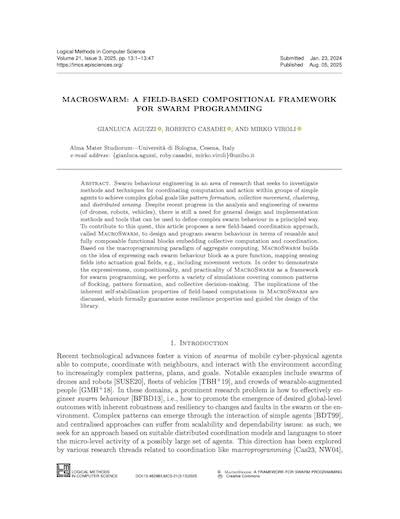Today's article comes from the Logical Methods in Computer Science journal. The authors are Aguzzi et al., from the University of Bologna, in Italy. In this paper, they explore a new approach to swarm robotics.
DOI: 10.46298/LMCS-21(3:13)2025


You must be an active Journal Club member to access this content. If you're already a member, click the blue button to login. If you're not a member yet, click the sign-up button to get started.
Login to My Account
Sign Up